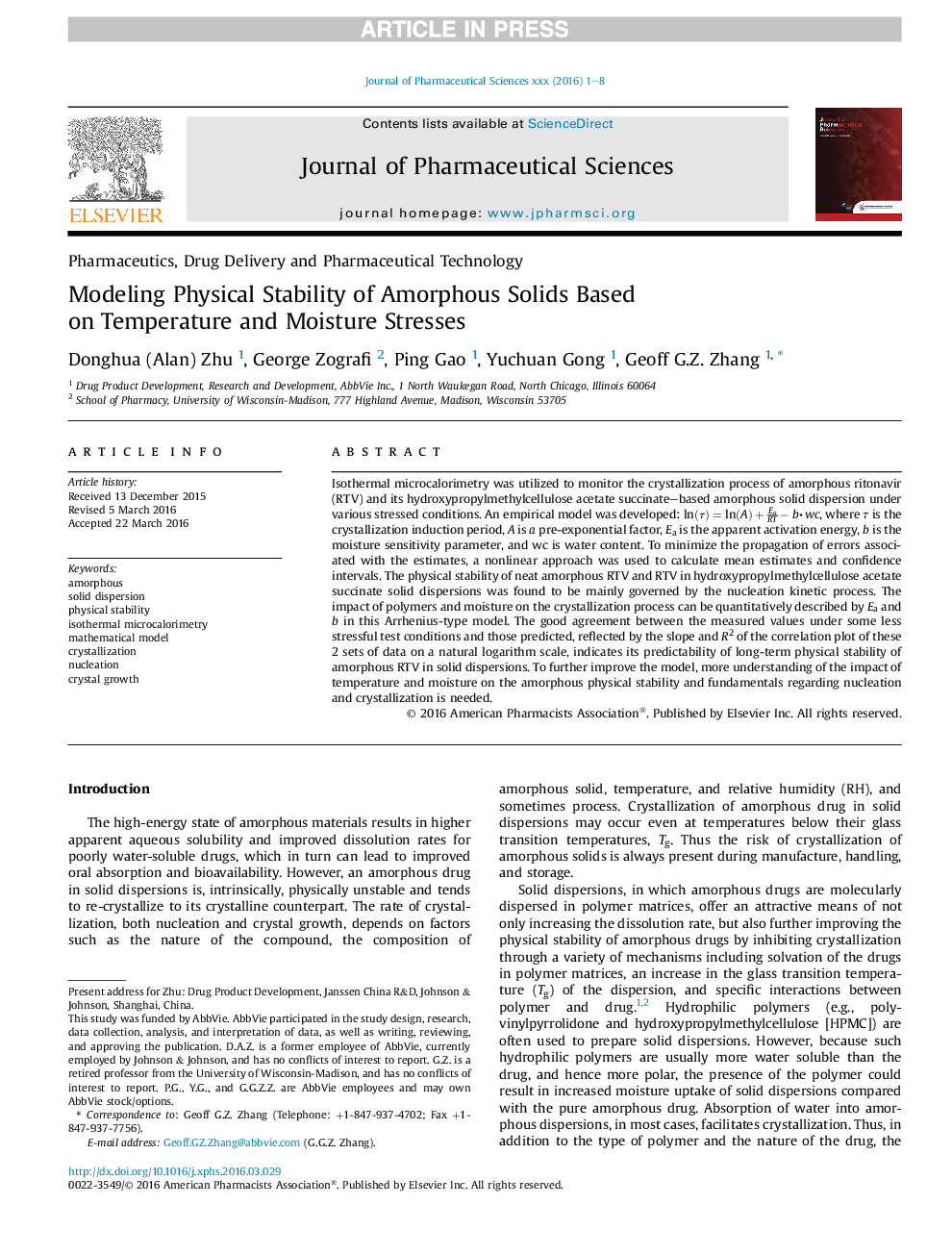| Article ID | Journal | Published Year | Pages | File Type |
|---|---|---|---|---|
| 8515046 | Journal of Pharmaceutical Sciences | 2016 | 8 Pages |
Abstract
Isothermal microcalorimetry was utilized to monitor the crystallization process of amorphous ritonavir (RTV) and its hydroxypropylmethylcellulose acetate succinate-based amorphous solid dispersion under various stressed conditions. An empirical model was developed: ln(Ï)=ln(A)+EaRTâbâ
wc, where Ï is the crystallization induction period, A is a pre-exponential factor, Ea is the apparent activation energy, b is the moisture sensitivity parameter, and wc is water content. To minimize the propagation of errors associated with the estimates, a nonlinear approach was used to calculate mean estimates and confidence intervals. The physical stability of neat amorphous RTV and RTV in hydroxypropylmethylcellulose acetate succinate solid dispersions was found to be mainly governed by the nucleation kinetic process. The impact of polymers and moisture on the crystallization process can be quantitatively described by Ea and b in this Arrhenius-type model. The good agreement between the measured values under some less stressful test conditions and those predicted, reflected by the slope and R2 of the correlation plot of these 2 sets of data on a natural logarithm scale, indicates its predictability of long-term physical stability of amorphous RTV in solid dispersions. To further improve the model, more understanding of the impact of temperature and moisture on the amorphous physical stability and fundamentals regarding nucleation and crystallization is needed.
Keywords
Related Topics
Health Sciences
Pharmacology, Toxicology and Pharmaceutical Science
Drug Discovery
Authors
Donghua (Alan) Zhu, George Zografi, Ping Gao, Yuchuan Gong, Geoff G.Z. Zhang,
